Fitness Gamification Examples: Make Your App Fun and Engaging
Gamification might be a buzzword right now but look around you: whether it’s shopping, wellbeing, entertainment, or work – the core components of games are applicable in nearly every part of our lives. The whole world might, in fact, be a simulation!
We believe in the effectiveness of gamification techniques because they make difficult tasks more engaging and palpable. And building muscles takes tough moves, doesn't it? But imagine if the exercises were gamified. What a fun experience could that be. The world of fitness seems to be a perfect fit for gamification.
In 2016, the AR game Pokemon Go made a splash among mobile users, and even though it wasn’t targeted at fitness enthusiasts, nor was promoted like another fitness encouragement app, it actually motivated people to walk more.

Pokemon Go meme
This case tells us that gaming and fitness are a perfect match for those who want to exercise more but struggle to do it, as well as for those who just are excitable enough to get hooked on fun activities.
Let’s see how mobile applications can do better than their competitors by applying fitness gamification techniques.
What Is Gamification?
Nick Pelling is credited with creating the term way back in 2002, but it wasn’t used worldwide until more than a decade later. There are a few alternative interpretations but gamification generally means introducing game-like elements to non-gaming systems, which is applicable in the context of mobile apps.
In mobile apps, gamification is introduced in every imaginable aspect. It can cover small interactive elements like a progress bar for completing a LinkedIn profile or a whole system of game-like creatures and continuously unlocked achievements like those used in the language-learning app Duolingo.
Waze, an app for drivers we mentioned in our article on navigation features, owes much of its success to gamification. There are avatars attached to each user with statuses that change according to activity inside the app: every reported incident on the road, as well as just driving with the app open, is rewarded.
The social app Snapchat is good at giving out trophies for unusual snap uses, which is a game-like technique that taps into the very real human attraction to random rewards. There are so many gamification examples like these that we can just go on and on forever.
Yu-kai Chou, who lectures and writes books on gamification, claims that this phenomenon will grow into something bigger. From small beginnings, like implementing little decorative reward elements, the whole approach to tasks could shift towards making them truly enjoyable.

How to Gamify Fitness: The Techniques Used in Mobile Apps
How exactly can fitness be gamified in mobile apps? There are plenty of game components that can be used to the benefit of fitness enthusiasts. We’ll illustrate some examples of applications which implement visual storytelling, challenge and reward systems, and other tools to gamify exercises and make them fun.
Storytelling
People understand visual information better than verbal but they also get easily hooked on stories. Developers learnt that the power of storytelling can be a great source of motivation for fitness. It’s not currently the mobile app mainstream and maybe it will never be, but story-rich gamified fitness apps have steadily grown their niche.
Six to Start is a company behind the most popular exergame out there − Zombies, Run! and other story-based fitness games like The Walk and Superhero Workout. We mentioned Zombies, Run! in our article on running apps. It contains hundreds of missions which runners have to complete in order to save themselves and the world from the zombie invasion.
Different missions maintain a balance between the task’s seriousness and its entertainment value. Users can report back on their missions to the community and describe their thoughts and impressions in the comment section. To keep loyal users interested, the company continues to record new seasons of this never-ending story. The ZombieLink feature allows runners to log in and see their routes and pace.
Back in 2012, the exergame was released as a paid app. It also had the highest price among other top-rated game apps. But in 2015, the company shifted to the freemium pricing model and now offers basic content for free and more stories for $5.99 per month.
Two other games developed by Six to Start have similar game-like features: elements like sound clips that can be unlocked as the story progresses, checkpoints and collectible items, and user autonomy over the story in some situations.
Zombies, Run!, The Walk, and Superhero Workout make fitness adaptive and fun. As we can see from user reviews, people find that narrated immersive games are helpful in terms of boosting motivation.
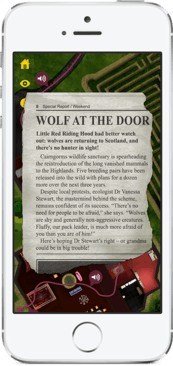
The Walk
Alongside exergames as a unique type of app, many exercise apps gamify the fitness experience by adding audio stories. In 2013, one of the most popular apps for running, Runtastic, launched downloadable stories for users to listen to while running. This is a premium feature and narrated stories raise pressing issues like ocean pollution in ‘Back to the Oceans’ or motivational help in ‘Towards the Finish Line.’
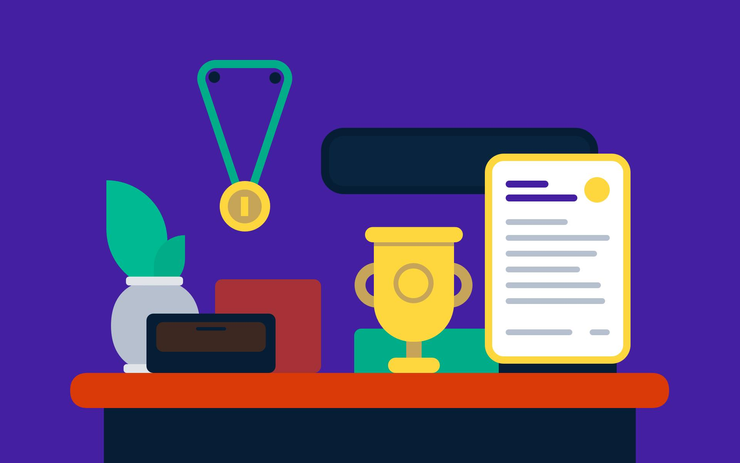
Rewards
The human brain prioritises instant gratification. While this pattern is usually a problem when it comes to pursuing long-term goals, it can be beneficial in fitness apps. With every little action appreciated and rewarded, users feel confident and motivated to do more. The idea of digital rewards has been abundantly used by developers when designing various challenges or making ranks or hierarchies within an app.
Many fitness apps offer rewards and have their own virtual marketplaces, which is one of the core components of gamification. There are both digital and real-world prizes featured: users can receive badges which are recognised within the online community, collect enough points to get real-world discounts, or even convert the miles they run into charitable donations.
Badges
Apple’s Activity app, for example, celebrates every user achievement with a badge. Badges are given when people reach weekly and monthly movement goals, complete their first swimming or cycling workout, or sign up for challenges dedicated to special occasions such as Earth Day.
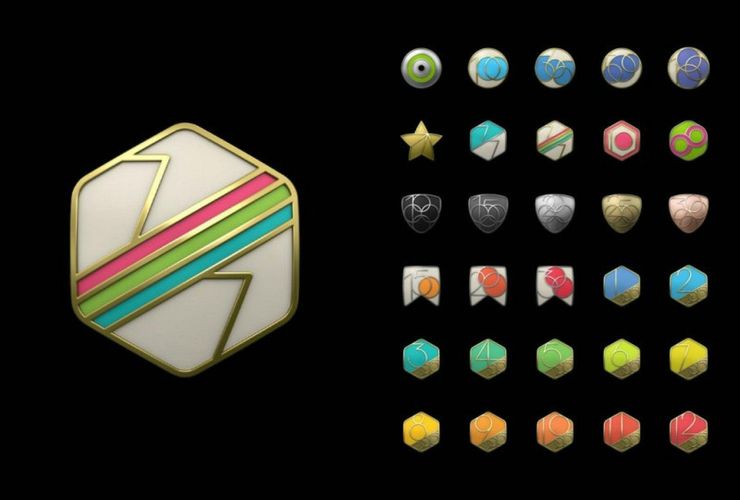
Badges in Apple’s Activity app. Source: MacRumors
The Fitbit app introduced as many as 100 badges for a variety of small achievements. There are nine types of reward ranging from daily step records to group challenge accomplishments. Fitbit also encourages users to share their badges to boost community motivation.
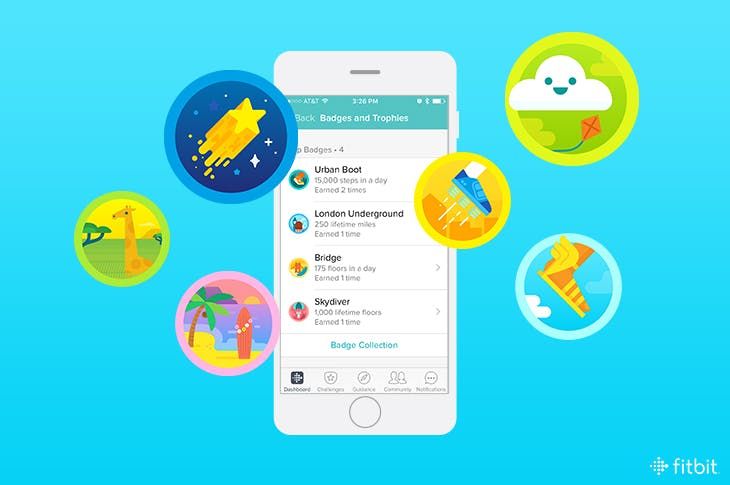
Fitbit badges. Source: Fitbit
Challenges
Social features which provoke peer pressure have been actively used in the best gamified fitness apps. In our article on gym workout applications, we stated that people need support from peers and are more likely to enjoy training with a friend than alone. Fitness programs introduce game-like challenges to address this human need and create a strong, engaging community.
Fitbit offers challenge participation between family and friends. Daily or weekly leaderboards display progress and winners get a trophy. There are five distinct races which up to 30 people can participate in at a time.
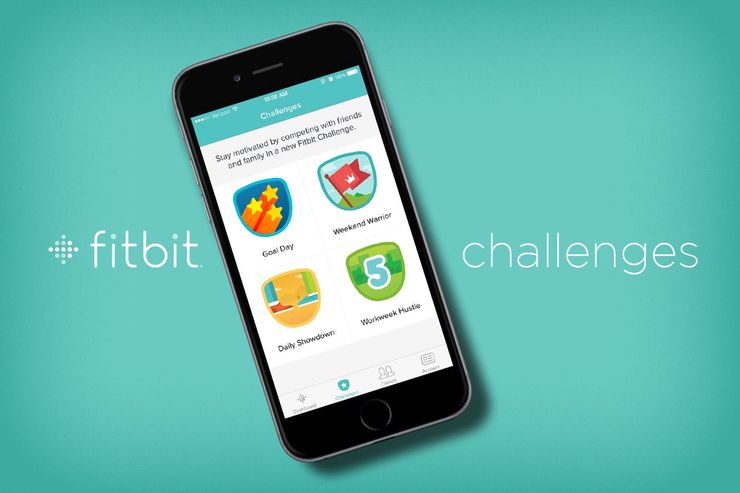
Fitbit challenges. Source: Fitbit
Nike+ Run Club added custom challenges in 2019. Users can now create their own challenges and invite friends to the competition. MyFitnessPal also allows people to create their own friendly challenges. Some companies like inKin provide software for group competitions based on data from pedometers.
Other apps are designed not for general fitness but for something more specific such as winter sports. For instance, EpicMix provides races and challenges for skiers. The program offers a reward system for non-mountain activities and custom challenges, tailored to a given terrain, are available at several ski resorts.
Levels
Many apps for fitness gamification include competitive levels. In 2010 in addition to the preexisting challenges, Fitrockr added a system based on fitness levels. Now, users enter at level 0 and progress by collecting points. A leaderboard is visible to all users and enhances motivation. Fitrockr provides useful statistics on a user’s level history and their overall performance.
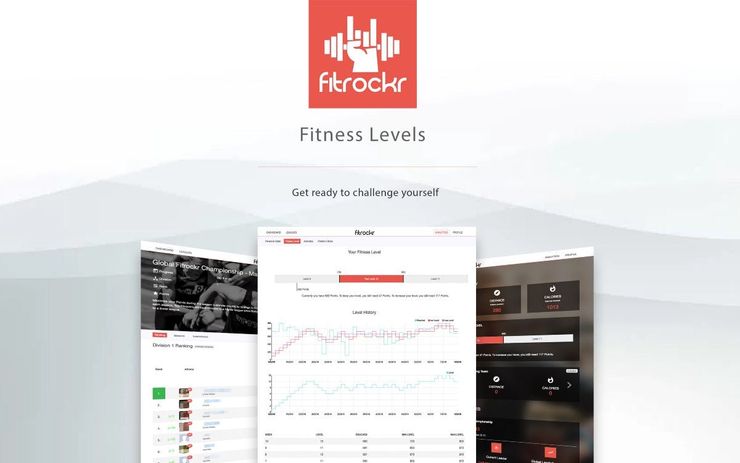
Fitness levels in Fitrockr. Source: Fitrockr
Punishments
Interestingly, there’s a reverse side to all this gratification. Several behavioural studies show that many people are more inclined to avoid threats than gain bonuses. Still, the punishment approach is quite unusual in mobile apps. Which makes programs that include more stick than carrot unique and intriguing.
On that note, the CARROT app, designed for workouts and calorie counting, market their lead character as a judgemental, sadistic AI which shames people into transforming their bodies. Many users appreciate this approach and the touch of cruel humour CARROT has.
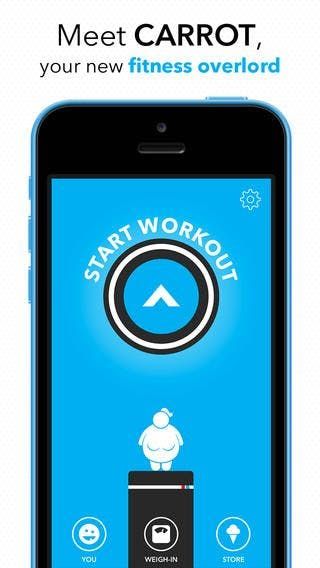
The Carrot app. Source: App Store
At MadAppGang we also developed a lively application based on financially punitive motivation. In Slap, users set a fitness goal and the app tracks whether it is accomplished. If users miss their target, they have to pay the sum of money they specified to a certain fund. The whole point of the program is that users choose the fund they have little sympathy with so that sending money feels like a slap.
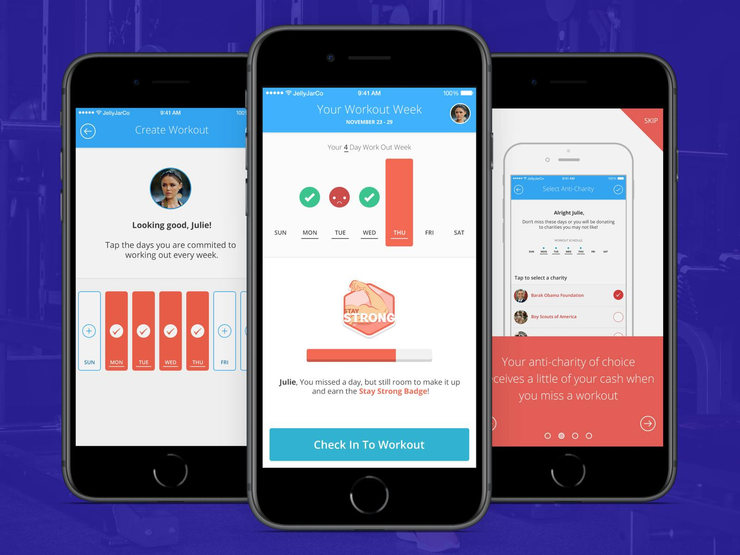
Slap
Social Shares
Most fitness applications encourage users to share and record their activities on social networks and many even function as one. Nike+ sends cheering sounds every time someone likes a Facebook post of a shared activity. Fitocracy gives special badges to those who post comments on the in-app community.
Strava is known for a vast number of badges and challenges. The service also motivates people to share their experiences and compare their results quite intensely. Merch items with the phrase “If it isn’t on Strava, it didn’t happen” play to the human need for attention and the visualisation of progress.
Strava’s talent for engaging people in fitness, which one community member called self-gamification, pushes users to compete with their own previous results. Another game-like aspect, unique to Strava, is the ability to use maps of completed runs and cycles in creative ways. Runner Lanny Maughan became famous after turning his miles into art inside the program.
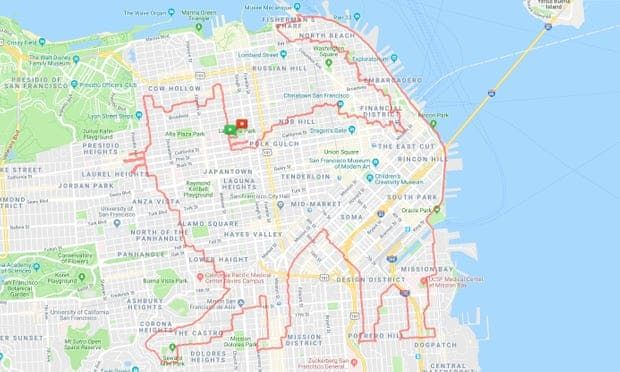
Photo courtesy of Lenny Maugan
Avatars
A University of Missouri study showed that having an online avatar and embodying this virtual persona can have a motivational effect on offline health. Avatars are a common thing in PC and console games but they aren’t widespread in mobile apps. This could change, and some apps already gamify their service with custom avatars. For example, FitRPG creates a character for each user, making fitness into a role-playing game.
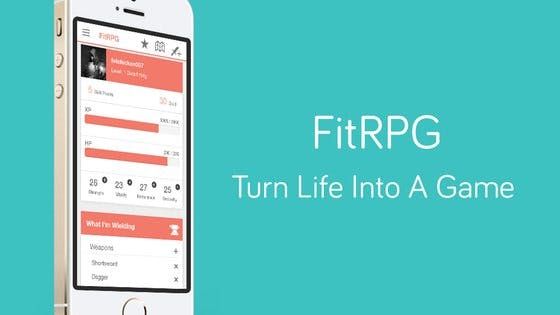
The FitRPG app. Source: FitRPG
Gamification components, be it personal badges, group challenges, or peer support, act as positive reinforcement and incentify fitness enthusiasts to do more and have fun while exercising.
Three-Dimensional Environments for Exercise Gamification
Not only mobile apps are mixing fitness and gaming but famous gaming platforms like Xbox or Nintendo also provide specific programs for engaging in sporting activities. This is a relatively new area and a new way to connect the real-life environment with the digital. For example, Fit Freeway, available for iPads and iPhones, provides a racing game synchronised with a workout system. The technology captures user movements and integrates them into the racer game, so a person performs exercises and controls a virtual car at the same time.
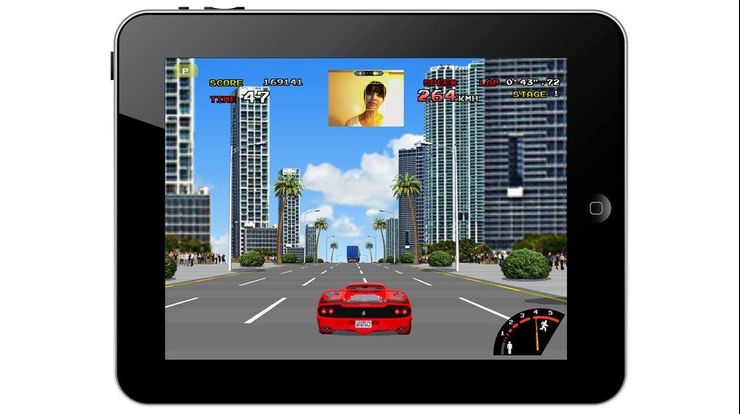
Fit Freeway. Source: New Atlas
What More Can Be Done in Gamified Fitness Apps?
As we can see, many fitness apps implement some kind of gamification to make exercise more pleasurable and the app’s services more immersive. The exergame genre exploits the power of storytelling and cross-platform innovations, which capture user movements, are among the first early steps of what we call gamification in fitness.
It handy to remember that while entertainment value is important, any fitness app needs a solid scientific base. In MadAppGang’s running app, SmartRun, we put health first. We built a program which uses data from a heart rate sensor to offer running recommendations to users.
Reach out to us if you’re inspired and want to make a fun, gamified fitness app. We have the skills and industry knowledge needed to help you and your users run, jump, and skip!
03 September 2019
